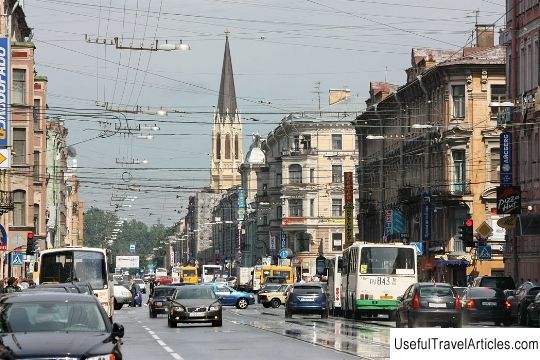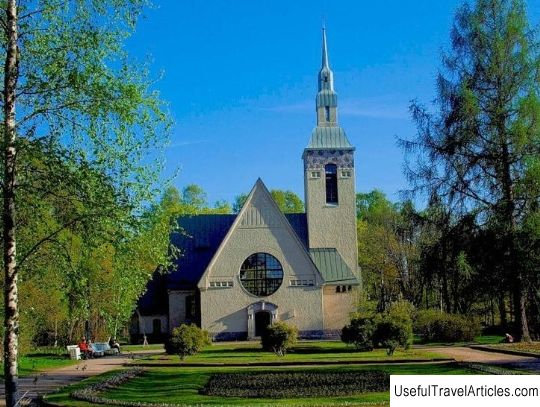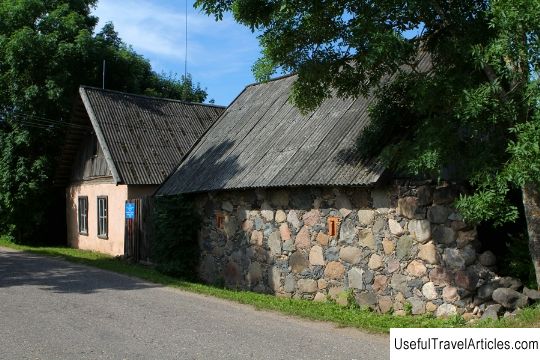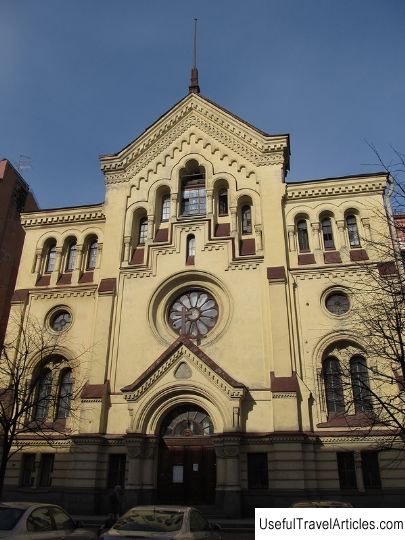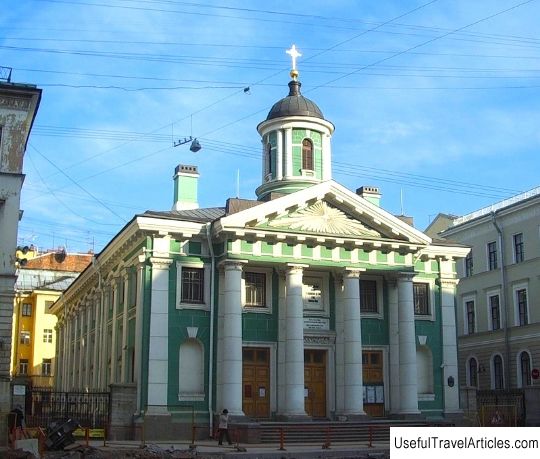Lutheran Church of St. John the Apostle - description and photos - Russia - St. Petersburg: St. Petersburg
Rating: 7,9/10 (2859 votes) 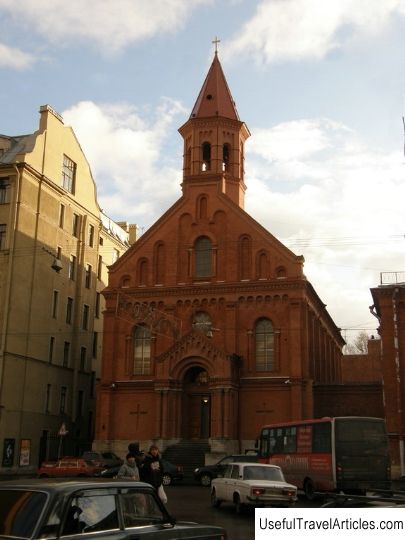
Lutheran Church of St. John the Apostle - description and photos - Russia - St. Petersburg: St. Petersburg. Detailed information about the attraction. Description, photos and a map showing the nearest significant objects. Photo and descriptionThe emergence in the early eighteenth century near the borders of Estonia of the city of St. Petersburg, which quickly became a metropolis, could not pass unnoticed for her. The impact on the economy and culture is difficult not to assess. A lot of famous Estonians: politicians, artists, scientists, musicians, writers were connected with St. Petersburg by narrow ties. People came to the capital of the Russian Empire from all parts of it, including many Estonians. Gradually, an Estonian community was formed in St. Petersburg, and with it the Estonian Lutheran parish. At first, Estonians attended services in the Swedish, Finnish or German churches, where services were sometimes held in their native language. In 1787, it was allowed to conduct the service in Estonian every second Sunday after the main service, which was conducted in German. This moment is considered the beginning of the creation of the Estonian Lutheran parish. Soon, in 1839, it was decided to build their own church for worship in Estonian. The formation of an independent Estonian parish took place in 1842, in the month of May, and already in July of the same year, the community decided to name its parish after one of the apostles - John, in the Estonian transcription - Jaan. This decision was later approved by the General Consistory. Finally, in 1843, the parish building, located in Droviany Lane, was consecrated. At that time, there were about five thousand Estonians in St. Petersburg, and the church was kept on their donations. By the end of the 19th century, due to the massive influx of immigrants from Estonia, the church premises could not accommodate all the parishioners, and it was decided to build a more spacious temple. A plot of land was bought on Officerskaya Street, now it bears the name of the Decembrists. The first stone was laid on June 24, 1859 on John's Day. And in 1860 (November 27) the temple was consecrated in the same way. The history includes architects Harald Julius Bosse and Karl Ziegler von Schaffhausen. They made a huge contribution to the construction of the temple and utility rooms. The temple had 800 seats. According to the testimony of contemporaries, the temple had excellent acoustics, every word uttered even in a whisper was clearly caught in all its corners. As the Estonian community developed and increased, which in the early years of the twentieth century numbered more than twenty thousand people, about the temple was built a complex of different buildings. There was a school, an orphanage, a tenement house, a service house. A lot of charity work was carried out on the basis of the temple of Jacob. Three services were held on Sundays, besides them weddings and funerals were held. An organ was installed in the church, the organist was constantly there. The choir worked, concerts were held. Orthodox Petersburgers also came to listen to organ music and the singing of the church choir. Many famous Estonian musicians and organists have gone through the organ school of the Jacob Church: Rudolf Tobias, Miine Harm, Johannes Kapel, Louis Gomilius, Konstantin Turnpu, Mihkel Lyudig, Mart Saar, August Topman, Peeter Here. The Soviet period brought the church is in decline. The property was seized, it was looted and closed. The bell tower and the portal were destroyed. Church ministers suffered a sad fate: some were executed, others were repressed and exiled. Several warehouses, workshops and even a construction trust were placed in the church building and other premises. The Estonian parish suffered irreparable losses, the number of Estonians decreased and in 1950 amounted to about five thousand people. In the early nineties, the Estonian community began to revive. First, the society of culture was officially recognized. A year later, the Lutheran Church began to conduct services in Koltushi. And in 1994 the work of the Estonian parish was revived. Finally, in 1997, the church building was donated to the Estonian parish. Its revival began, and the government of the Republic of Estonia rendered great assistance in this. In February 2011, the Church of St. John the Apostle was opened to believers.        We also recommend reading Pentagonal Tower (Peterokutna kula) description and photos - Croatia: Porec Topic: Lutheran Church of St. John the Apostle - description and photos - Russia - St. Petersburg: St. Petersburg. |
